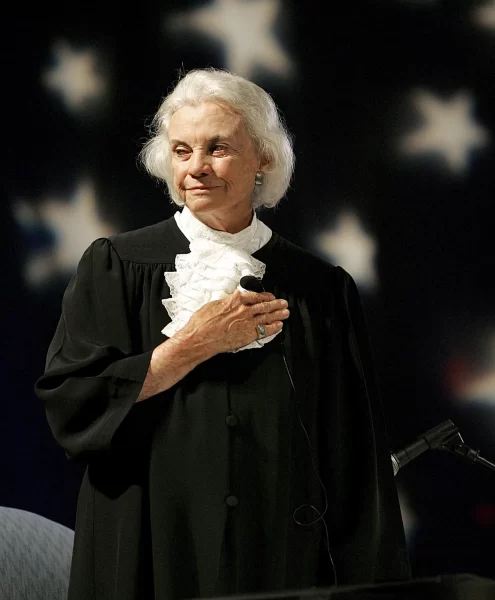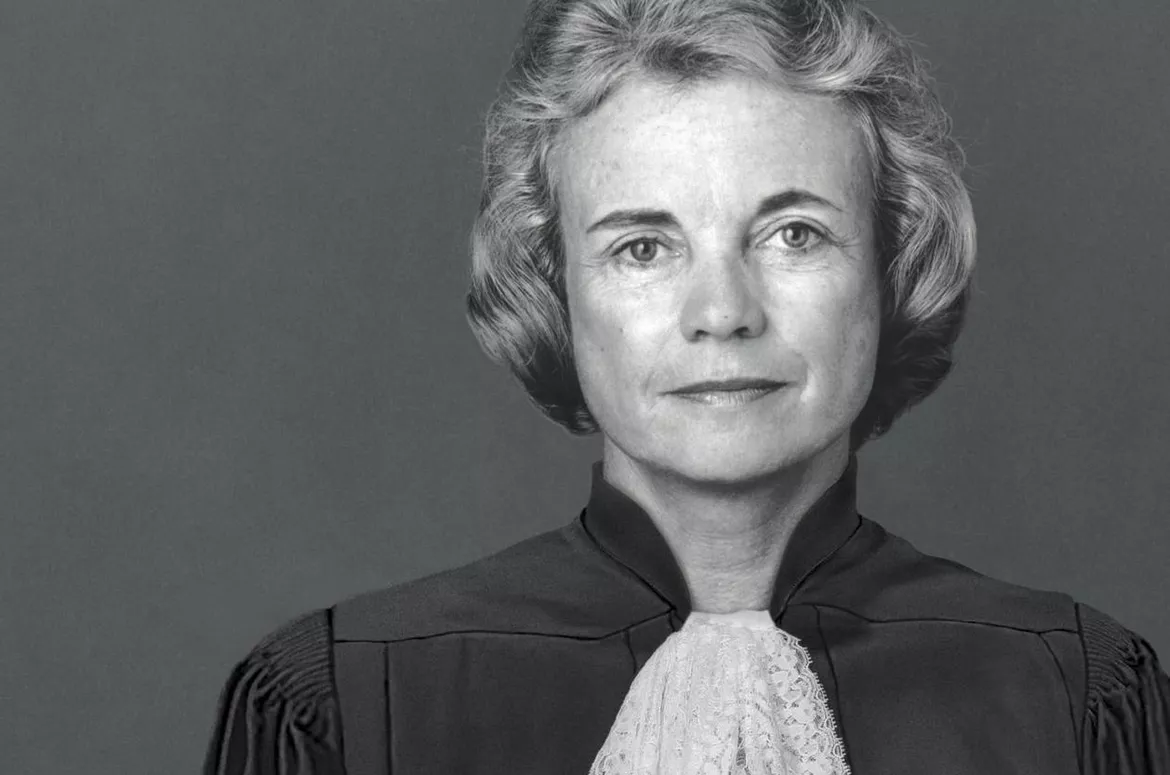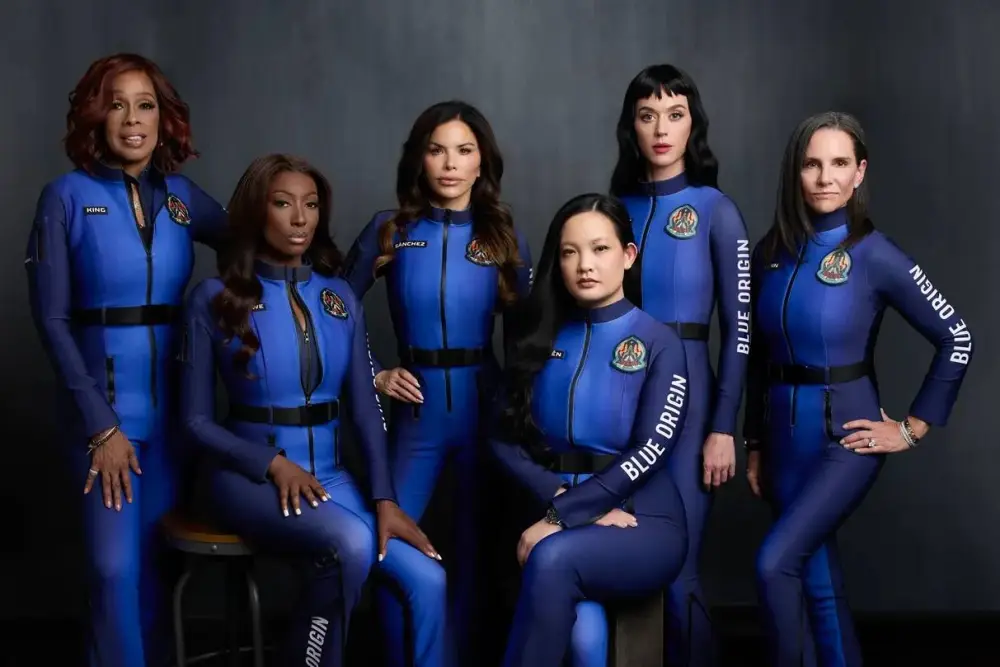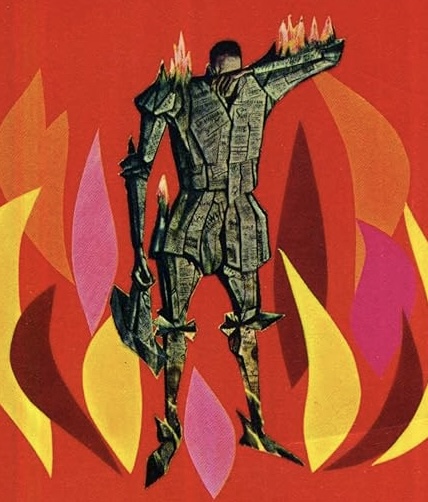The first female Supreme Court Justice Sandra Day O’Connor died on December, 1st, at the age of 93. She was a groundbreaking figure in the American legal and justice systems, being appointed as the first woman to sit on the bench at the Supreme Court. Justice O’Connor was known for her swing votes on the high court, advocating for abortion, freedom of speech, and gender equality. She was a trailblazer for women both in and out of the high court.
Sandra Day was born in El Paso, Texas on March 26th, 1930, and grew up on the family ranch near Duncan, Arizona. The nearly 200,000-acre ranch was nine miles from the nearest paved road and did not have running water or electricity until she was seven years old. Because of the ranch’s remoteness, she lived with her grandmother in El Paso during the school year so she could attend school.
In 1946, Day was accepted into Stanford University at 16 years of age. After graduating in 1950 with a degree in economics, she was inspired by one of her professors, Harry Rathbun, to study law. She enrolled in Stanford Law School and wrote for the Stanford Law Review. At the time of her graduation in 1952, Justice O’Connor earned the Order of the Coif, meaning that she was in the top ten percent of her class. While at Stanford, she met her future husband, John Jay O’Connor III, and married him six months after graduation on her family’s ranch.
Sandra Day O’Connor found it difficult to find work as a lawyer because of her gender. After a hefty amount of job searching, she applied to San Mateo County as a deputy county attorney. The county attorney there told her that “his office was not funded to hire another deputy,’ per supremecourt.gov. O’Connor was persistent, writing a very long explanation to the County why she would be fit for the position. Sure enough, she got the job.
When O’Connor’s husband was drafted to Germany in 1954, she went with him and got a job as a civilian attorney with the United States Army Quartermaster Corps. They left in 1957 and moved to Phoenix, Arizona, where O’Connor passed the bar and started a local law office. She took a break from practicing law to raise her kids but remained active in local politics. In 1965, O’Connor became an assistant state attorney general. From 1969-1975, she served as a state Senator, gaining popularity by fighting for equal rights between men and women. She then became a trial judge in 1975 and was appointed to the Arizona Court of Appeals in 1979.
In Ronald Reagan’s 1980 presidential campaign, he made a point to nominate a woman as a Supreme Court Justice. When Justice Potter Stweart retired, Reagan appointed O’Connor. Justice Sandra Day O’Connor was unanimously voted into the Supreme Court on September 25, 1981. She was one of the few Justices unanimously voted, with the votes standing at 99-0.

Justice O’Connor played a pivotal role while serving on the Supreme Court. She was known for her swing votes, being the tie-breaking vote on 330 different verdicts. Two of her most famous cases included Planned Parenthood of Southeastern Pennsylvania v. Cassey and Bush v. Gore. The outcome of the abortion case of Planned Parenthood against Pennsylvania Governor Robert Casey worked in favor of Jane Roe’s case in 1973, reaffirming a woman’s right to an abortion. O’Connor held the swing vote, 5-4. Bush v. Gore‘s outcome was 7-2, settling the infamous recounting of the presidential votes in Florida. Throughout her career, she was resilient; beating cancer through surgery and chemotherapy while still sitting on the bench.
After nearly 25 years at the Supreme Court, Justice O’Connor stepped down from her duties as a justice in 2006 when her husband’s health was threatened by Alzheimer’s, he died as a result in November of 2009. O’Connor was awarded the Presidential Medal of Freedom by President Barack Obama in August that same year. Despite retiring, the former justice was active in politics, voicing her opinions on major topics, public speaking, and writing a book. In 2018, she retired from public life after being diagnosed with the early stages of Alzheimer’s. On December 1st, she passed away.
O’Connor will be remembered throughout American history as the first female Supreme Court Justice, lighting the way for female Supreme Court Justices and generations to come. There never has been, and never will be, a woman quite like Sandra Day O’Connor.
“I think the important thing about my appointment is not that I will decide cases as a woman, but that I am a woman who will get to decide cases.”
– Sandra Day O’Connor






















Chris Summa c/o Winthrop High School • Dec 15, 2023 at 1:31 pm
Shan,
What a wonderful read! I enjoyed every second. There was a few pieces of information that I was not aware of which made your article much more interesting. I agree with you that she was quite a woman!